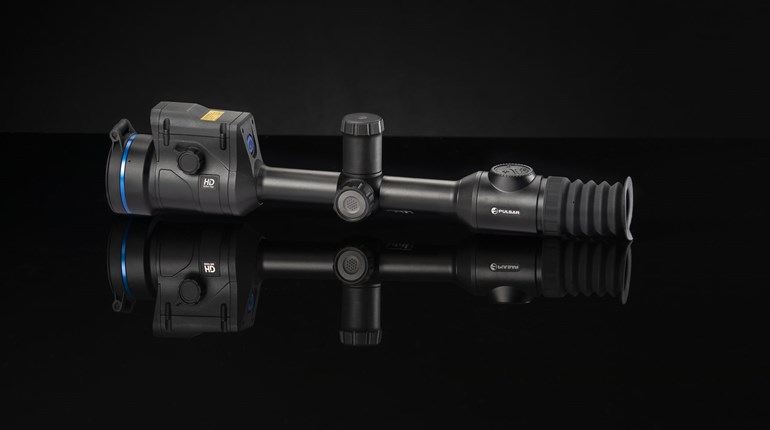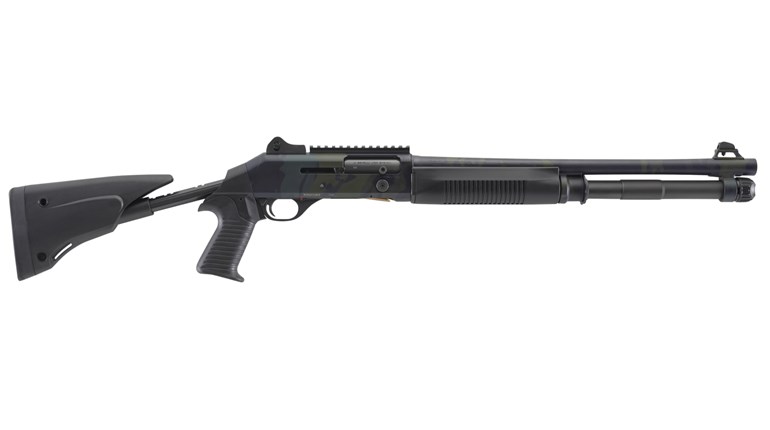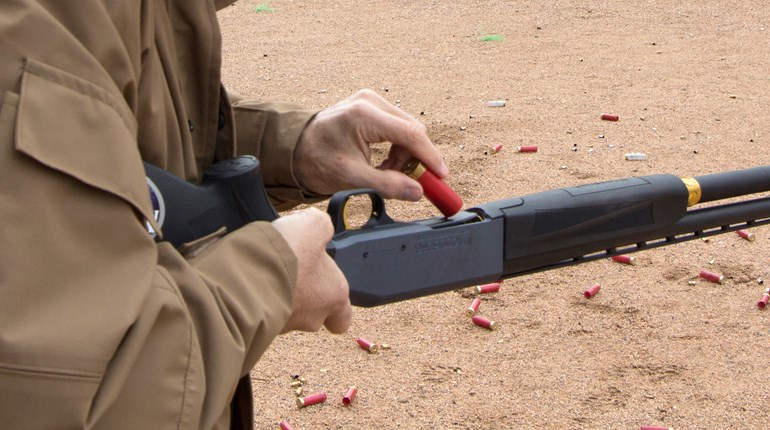
The goal of this column is to inform Shooting Illustrated’s readers of top shotguns, shotgun techniques and training for self-defense. But, when I talk about a specific gun, it often alienates one camp from the discussion. You see, when it comes to shotguns for defense, there are those firmly entrenched in the semi-automatic camp, who believe faster shooting and lighter recoiling is worth the slight reduction in overall reliability. In the other camp are those who believe reliability is paramount and won’t consider a shotgun which has an action that cannot be worked manually. But alas, some of these warring folks forget that since 1989, there has been a quality shotgun that does both: Benelli’s M3. Before we get into the guts of this remarkable shotgun—perhaps the best ever offered for law enforcement purposes—let’s talk about the company and its revolutionary shotgun action.
Benelli Armi S.p.A. is an Italian company that produced motorcycles before making shotguns starting in 1967. Bruno Civolani invented the company’s trademarked inertial spring method of semi-automatic shotgun function, although the company’s specific patent, No. 4604942, was granted to Paolo Benelli in 1986, three years after Beretta purchased the Benelli company. The inertial-action concept was an advancement from the Swedish Sjögren shotgun first made in 1908 that failed to garner popular approval; it was later used effectively by Franchi, but it was the marketing efforts of Benelli during the 1990s that really made shooters aware of its effectiveness.
Here’s how it works:
A floating bolt featuring a rotating-bolt head locks onto the gun’s barrel extension to seal the chamber. When fired, recoil sends the gun (barrel, receiver and stock as one unit) backward, while the heavy bolt tries to remain at rest—hence the term “inertia.” After a split-second of rearward-moving force against it, however, a stout spring within the bolt body compresses to a maximum of 4 mm. When it rebounds, it pushes the bolt head forward (even as the gun is traveling backward), unlocking its bite on the barrel extension and subsequently succumbing to the rearward momentum of recoil.
As it flings backward, it extracts the shell from the chamber and ejects it via a spring-loaded, L-shaped ejector on the inside wall of the receiver that slides to accommodate various shell lengths; all the while the bolt’s travel continues to compress a recoil spring hidden in the buttstock. Once this spring bottoms out, it returns the bolt forward to the chamber, but not before it picks up another shell from the carrier and shoves it into battery. The whole process happens in about a fifth of a second.
Its genius is that it requires no gas ports to foul, no moving barrels like long-recoil actions and has fewer moving parts to wear and break. Gas and grime from the shell are blown out of the barrel rather than cycled back through the gas ports and into the action like gas guns. As a result, it is incredibly reliable and it will shoot any length of shell in any order without adjustment. It’s also faster cycling than most gas actions, a trait that allowed Tom Knapp to hit 10 flying clays with an M2 Super 90 (a lighter update to the M1) in 2.2 seconds. Furthermore, it is inherently lightweight, thanks to its simplicity.
For these reasons, it’s somewhat puzzling why the Marine Corps chose Benelli’s M4 shotgun with its ARGO-gas-piston-action system rather than Benelli’s inertia-action M2 as its standard-issue shotgun. Yes, the M4 has a couple advantages, but reliability is not one: The M4 is less sensitive to weight changes if, for example, if a heavy optic or other accessories are added to the gun. It also mitigates recoil better than the M2 due to its naturally heavier weight and the inherently cushy gas action. Still, it’s tough to think a heavier, less reliable gun would be chosen over the M2, especially when similar but less expensive gas-action guns abound.
Regardless of which Benelli was chosen by the Marine Corps, plenty of folks who depend on a shotgun for their livelihood believe the speed gained from a semi-automatic action is worth the slight—perhaps one percentage point—drop in reliability over a pump when full-power loads are used. But, if reduced-recoil loads or specialty loads like rubber-bullet rounds or less-lethal beanbag rounds are needed (or if the gun just happens to be incredibly dirty or filled with mud, ice or sand), reliability falls dramatically, so that most semi-autos are reduced to single-shot firearms.
This is where the incredible M3 shines. The original M3 (modeled after Benelli’s M1) was updated with features from the M2 Super 90, including a smaller receiver that shaves weight to 7.2 pounds. Think of it like an M2 with an emergency switch. For normal times shooting standard or heavy loads, the M3’s inertial, semi-automatic action functions flawlessly. But, when reduced-recoil loads are needed, the user must simply rotate a lever located between the fore-end and the magazine cap.
This movement unlocks the fore-end and engages the action rods of the pump system, instantly converting the M3 to a pump action—and a good one at that. Returning the lever disengages the action bars, locks the forearm and allows the inertia-recoil system to function as a semi-automatic. It’s pure engineering genius that gives the user all the advantages of a semi-auto with the reliability of a pump, all with a flip of a lever that takes less than a second to activate without sacrificing the shooting position.
Action aside, the M3 Super 90 comes with every feature needed in a top-quality combat shotgun with the exception of its rather paltry five-round (civilian model) magazine. (This is due to American importation laws, but mag-tube extensions can be purchased from Benelli or less expensively from third party manufacturers.) The M3 features a handy 19.75-inch barrel as well as a magazine cut-off/chamber-dump button so the shooter can directly chamber a special round without having to cycle through the entire magazine. It also offers balance and ergonomics that make it easy to shoot intuitively or by aiming, depending on the application. In other words, this is a shotgun with which I can hit flying clay pigeons or a bang a steel target at 100 yards with slugs.
The M3 is available in a Combat version with a pistol-grip stock for one-handed control, yet features a full-size/full-contour buttstock that greatly enhances shootability while mitigating recoil as a true shotgun stock should. The gun is available with a fiber-optic front sight only or ghost rings, as the M3 is designed for combat roles where less-lethal and/or slug loads are anticipated, so the ghost-ring sights are beneficial.
Regardless, the M3’s concept remains viable. If you’re looking for the best do-it-all defensive shotgun, but can’t decide between pump or semi—or you plan to use reduced-recoil loads—there is no shotgun better than Benelli’s M3 Super 90. I just thought I’d mention this option.






































